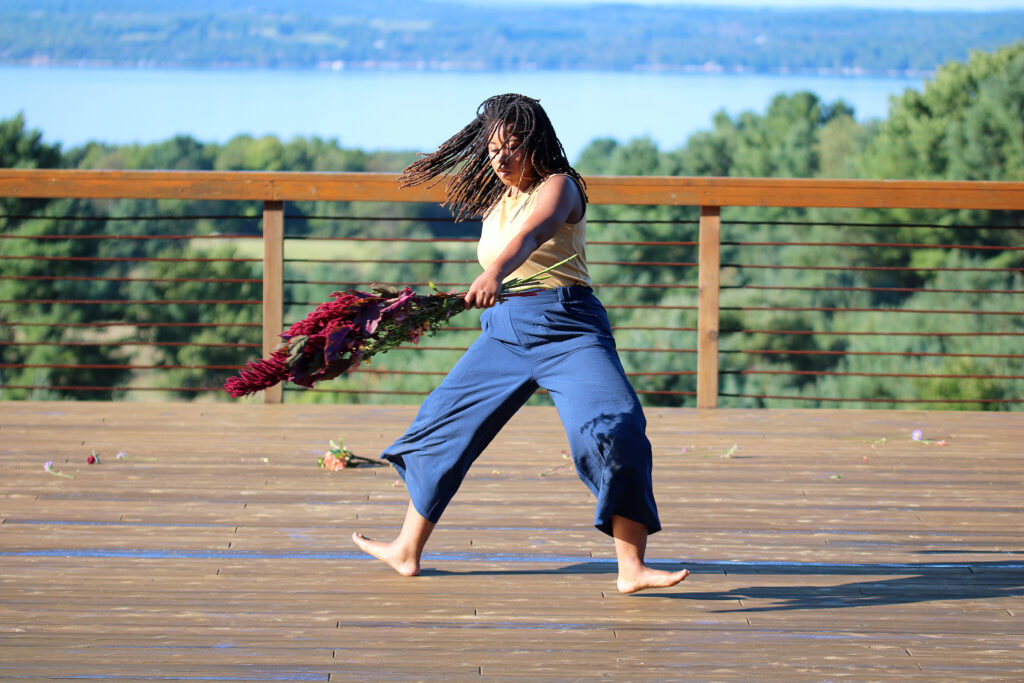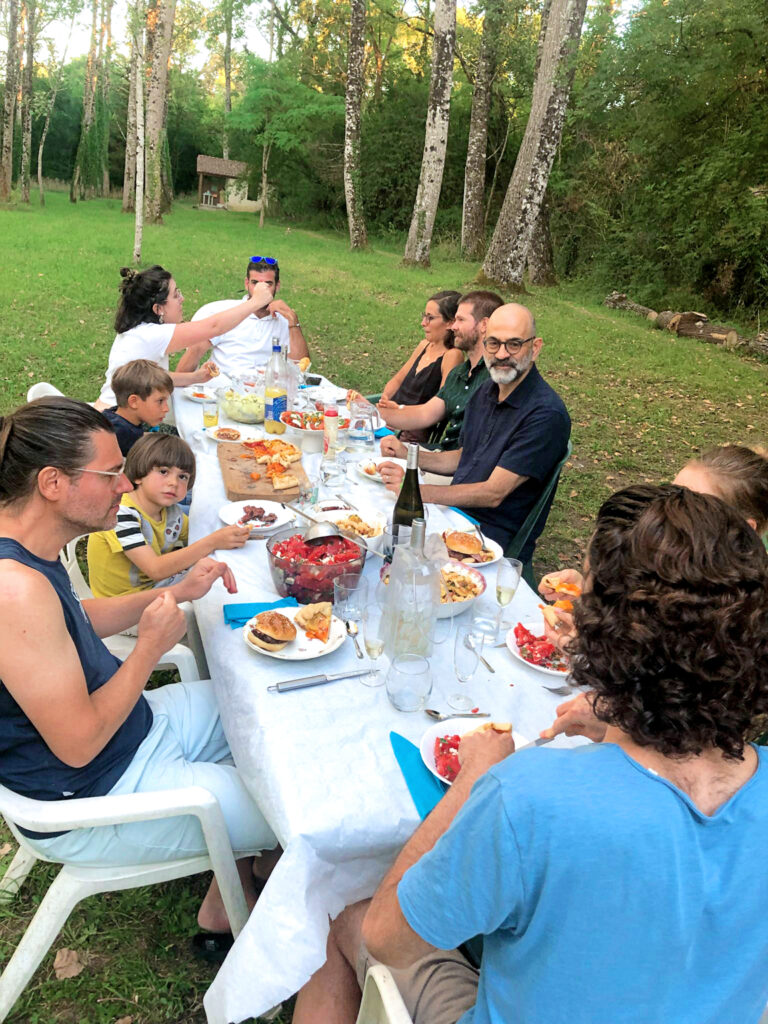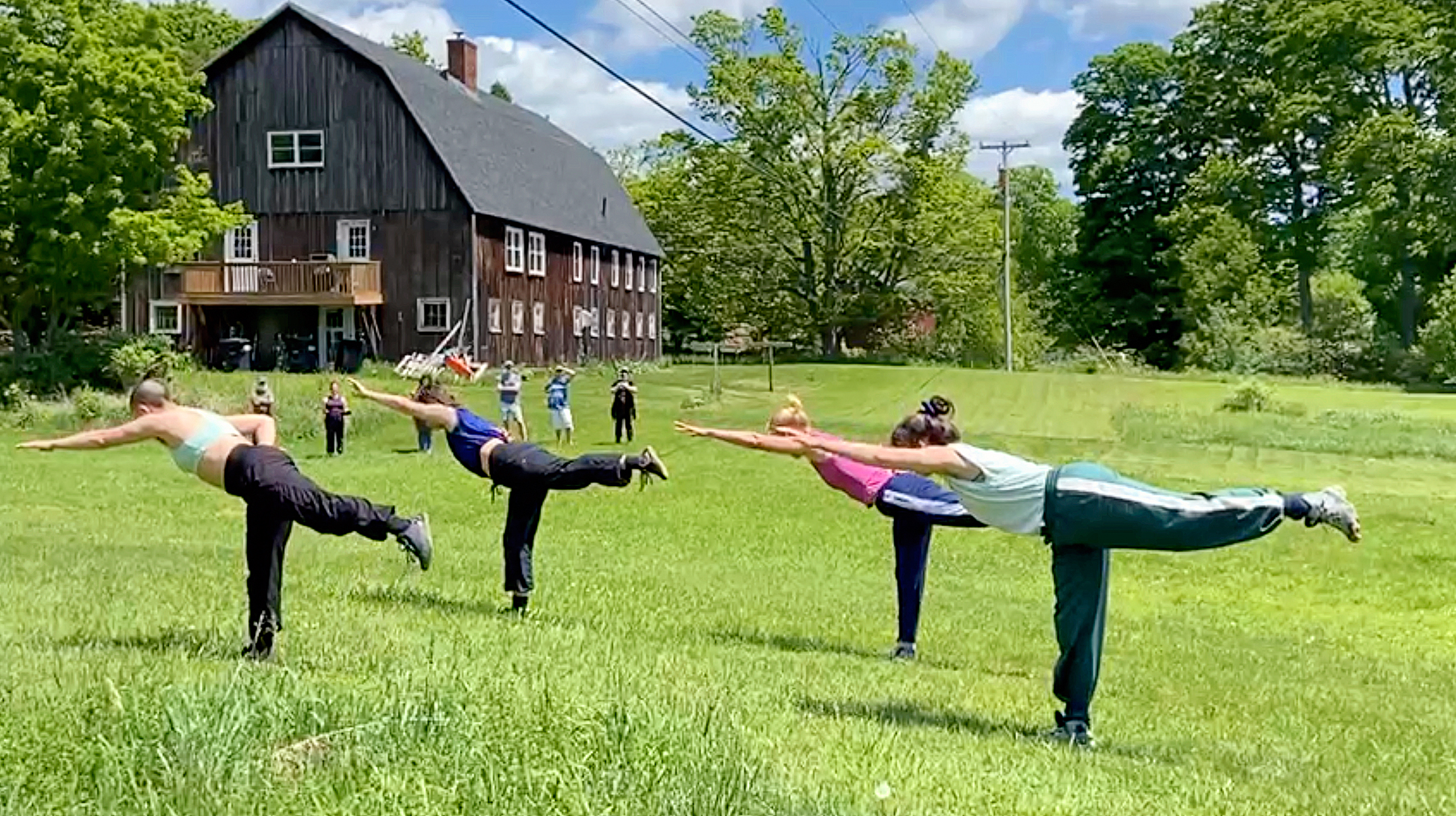Three Founders on Starting an Artist Residency
Benjamin Cheney founded The Croft in northern Michigan in 2018 as a nature-based residency for performing artists, a rural refuge from the everyday as a way of inspiring new work. “When people arrive for a residency, they’re in a new location, out of their norm,” says Cheney, who uses he/they/any pronouns. “That requires them to track a new space and map their new environment, which makes it easier to be creative.”
Setting up an artist residency program can be both gratifying and challenging. Cheney offers artists an outdoor deck in a bucolic setting for rehearsals, a stipend and travel funds for a two-week stay, and an informal sharing opportunity. The workload is admittedly a lot for one person to shoulder, and Cheney has had to take on three jobs in order to stay solvent during the off-season.
Thinking of starting an artist residency? Cheney, Teresa Fellion, of Middlebrook Arts Research + Residency Center in Jefferson, New York, and Mari Meade, of Moulin/Belle in southwestern France, share their experiences—and what they’ve learned along the way.

Structuring the Residency
Meade offers two distinct types of residency experiences: one structured and one self-led. At Moulin/Belle, if artists attend the weeklong Creative Exchange residency, they participate in two workshops led by Meade, have the opportunity to exchange with other artists who are present, and must complete six hours of a work exchange on the Moulin/Belle grounds. In contrast, Moulin/Belle artists in residence need only to complete three hours of work exchange and have more freedom in how they spend their time.
At The Croft, participants take part in either the Rootstock residency, which offers artists time and space, or the RADicle residency, which asks participants to create something during their time and then share it in an affiliated performance in Michigan, called RAD Fest. “For the RADicle residency, we can only choose one artist,” says Cheney. “For Rootstock, we usually support three artist groups of no more than four artists at a time.” (That’s how many people can fit in Cheney’s car, and they pick up residents from the airport.) Both Rootstock and RADicle artists receive a $575 stipend and up to $500 in travel funds, and Cheney asks that every artist give a gift to the land each day.
Fellion, who uses she/they pronouns, says that their residency experience is developed in conversation with the artist(s) attending and can range from a private residency for a small company to build a new work, complete with a works-in-progress showing for the local community, to a chance for a nonprofit organization to use the space for a professional development opportunity, where employees can connect as a team.
Finding Artists

Since the inception of the Middlebrook Arts Research + Residency Center in 2021, Fellion has filled residency slots without ever needing to advertise or do an open call for applications. “We’re just accommodating the people who approach us who seem like a good fit,” says Fellion. Meade, who founded Moulin/Belle in 2020, has an online questionnaire for prospective residents to ensure that participants are a good fit for the residency and vice versa. “We want people to come with a purpose,” she says. Cheney’s application process is the most detailed: He posts an open call for applications each winter, asking for an artist statement, a curriculum vitae and an explanation of how applicants think that being in a rural setting will support their creative process.
Do’s and Don’ts of Founding an Artist Residency
DO Know Your Community
“Take the time to know your community—their wants and needs—and engage with them,” says Teresa Fellion. That kind of attention will foster good relationships with townspeople, agrees Mari Meade, who spent a good deal of time getting to know the town of Mareuil en Périgord by attending events and teaching dance locally. “When artists from Moulin/Belle go to the nearby wine cave and they don’t speak French, the owners will ask, ‘Are you with Mari?’ ” she says. “They’ll switch to English and ask questions like ‘What’s your artistic discipline?’ ”
DO Ask for Advice
Meade recommends asking lots of people for advice. “Hear about their experiences—what worked and what didn’t,” she says. Meade asked another choreographer what she thought made a residency successful and learned that the heart of any residency center is the kitchen. “It’s where everyone meets—where shy people get to say hello. Because of that, when we renovated our kitchen, I made sure to put a double sink in so that people could stand there together,” she says.
DON’T Attempt All of Your Renovations at Once
In the early days of Middlebrook Arts Center, Fellion figured she’d complete all of the renovations on her wish list at once. “We’ve been in the space for about two years, and only now can we finally do those bigger renovations,” they laugh. Meade operated on a more realistic timeline from the onset of Moulin/Belle, since she knew she and her husband would be largely responsible for any updates to the space. “We could only do what we could, as we could,” she says. “That meant we were already hosting people before we were fully ready—but we were really transparent during our interview process. We’d say, ‘We’re going to be working on the counter while you’re here. Are you okay with that?’ ”
DON’T Do It Alone
Although Benjamin Cheney doesn’t regret creating a residency, they say, “I would never recommend doing it alone. My strength is not asking for money, for example. And I have no growth model.” Finding a partner or a small group to work alongside Cheney would’ve allowed them to focus on their particular gifts while leaving the tasks that didn’t come naturally, like fundraising, to others.
DO Ask for Feedback
Meade admits that asking for constructive criticism is difficult, but it’s a necessary step in establishing the best possible residency center. “It’s hard, because if you don’t ask, then you can assume that everything is perfect. And if you ask, you’ll get the stuff you don’t want to hear,” she says. “But being able to listen to others’ suggestions is important.”




